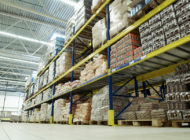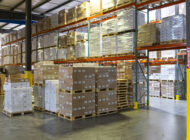Liability. It’s a term that most people like to avoid, and we can understand why. It conjures up thoughts of “things going wrong.” No one likes that, so best to avoid the subject, right?
Wrong. Avoidance simply leads to finger-pointing and bad feelings down the road if and when something actually does go wrong. In this article, we’ll examine where liability typically falls in a 3PL relationship for warehousing and explain how defining liability at the outset is a good thing for both you and your 3PL.
Warehousing liability: What is a 3PL provider responsible for?
In the logistics industry, most 3PL warehousing providers are fully responsible for their buildings, equipment, and people. This is standard practice in line with guidelines set by the International Warehouse Logistics Association (IWLA). So, if a hurricane peels back part of the roof, it’s the 3PL’s responsibility to fix it and relocate products as repair occurs. The same goes for a broken forklift or an injured associate – it is the 3PL provider’s responsibility to take care of these things in order to perform services as it is contracted to do.

The 3PL provider is also responsible for rectifying any errors that it makes. Examples include:
- Shipping the wrong product. If a wrong product is shipped, the 3PL will ship out the correct product and obtain and return the incorrectly-shipped product back to inventory.
- Incorrect loading of product resulting in damage. If the 3PL’s associates do not load products correctly for transportation and damage occurs, the 3PL may be liable according to the parameters of the contract. Conversely, if damage occurs after products have been loaded correctly and signed for by the driver, then the 3PL will not be responsible for product damage. Associates will often take photos of loading jobs to confirm the job was performed correctly.
- Incorrect handling of product resulting in damage. If product is damaged during handling (e.g., placing or removing products on/from the racks), then the 3PL will be responsible within the parameters of the contract.
When it comes to products, however, the 3PL is not responsible for damage due to “acts of God” (e.g., that hurricane mentioned earlier) and will typically have limited liability coverage for all other types of product damage, the exact parameters of which will be clearly defined in your contract. In most cases, the 3PL is financially liable for product damage or disrepair up to a certain (limited) amount. The bulk of the liability will be owned by the customer and its insurance coverage.
Warehousing liability: What is a 3PL customer responsible for?
In most 3PL relationships, the 3PL customer is responsible for its own products. Yes, the customer is placing its products in the care of the 3PL provider, and the provider must do all that is reasonable to protect those products, but the products are ultimately the responsibility of their owner.
If damage occurs, the 3PL provider’s insurance will typically cover a portion of the cost (limited liability) and the customer’s insurance will cover most of the replacement cost. To have product replacement insurance apply to goods being warehoused by a 3PL, the customer simply needs to take out a rider listing the 3PL facility as a storage facility. In some cases, the 3PL may add the products to its own insurance and bill the customer accordingly.
Determine liability within the contract
When it comes to creating the contract that will serve as the foundation of the 3PL relationship, it is important to remember two things:
- The contract should cover liability for every conceivable occurrence. If it can happen, it should be included in the contract. For example, if a hurricane does peel the roof of a section of the warehouse and it rains directly onto products for two days, what happens? Who’s responsible for what – and to what extent? That information should be built into the contract.
- Everything is negotiable. If you have things that you are adamant about in terms of liability, speak up at the beginning. While there are standards and guidelines for warehousing contracts and relationships, adjustments and negotiation are always possible. The important thing is to get it all in writing at the outset and avoid uncertainty and finger pointing down the road.
Look to Kanban Logistics for a rock-solid 3PL relationship
The best 3PLs are diligent in protecting their buildings, equipment, and people – and thus, by extension, your products. For 3PLs like Kanban Logistics, this includes detailed building and equipment checks along with safety and operational procedures according to ISO:9001-2015 specifications. In short, we do everything in our power to keep your products safe throughout the supply chain.
And, while we are always happy to address every conceivable issue in the contract at the outset, we’re also big fans of common sense. We understand that sometimes the unforeseen can happen no matter how prepared all parties are. In those instances, we work to ensure that fairness and common sense win the day – and that we always do right by our customers.
To learn how a relationship with Kanban can form a solid foundation for your supply chain, contact us today.



